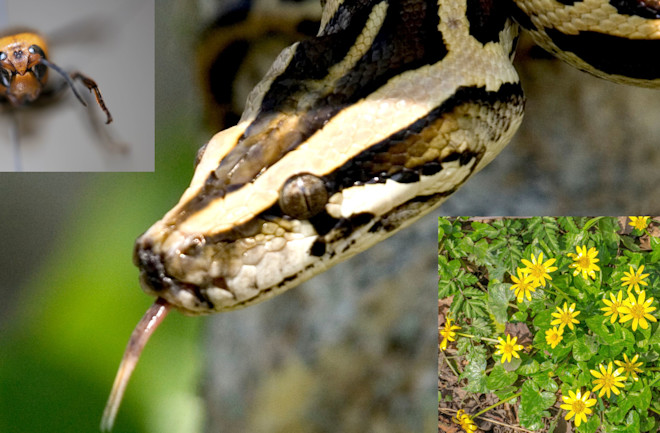Burmese Pythons! Northern Giant Hornets! Fig Buttercups! Okay, not all invasive species sound frightening. But all of them destabilize ecosystems, threaten native species, and/or spread pathogens. That’s why, in honor of Invasive Species Awareness Week, we are sharing ways that you can join researchers identifying, monitoring and controlling the most destructive exotic species.
Stop the spread of invasive plants
Invasive vines like kudzu and English ivy rapidly cover and smother native trees to death. Other exotic plants crowd out important native plants, and some are toxic to local flora and fauna. Nature's Notebook has several campaigns, including Pesky Plants and Shady Invaders, where you help scientists monitor invasive plants. They also offer Pest Patrol, to track invasive insects that threaten native trees.
Help control disease-causing mosquitoes
While we love all creatures great and small, it's okay to love mosquitoes somewhat less. Yes, they are important to many aquatic and terrestrial food chains, but they cause misery and disease to millions of people. And increasingly, exotic species are taking hold in new regions. Join the NASA-supported GLOBE Observer: Mosquito Habitat Mapper project to help predict and control outbreaks.
One fish, two fish, these are new fish
The voracious and venomous lionfish is just one of 46 exotic fish species reported in Florida waters by the iNaturalist project Florida's Non-Native Fish. And that project is just one of 2670 invasive species projects available on iNaturalist! To free yourself from the tyranny of too many choices, add your locality or organism of interest to your search term (ie, Invasive Maryland Plants) to winnow things down.
How you can help
Invasive species programs are very local; species that are a problem in one area may not be a concern in others. Therefore, visit the citizen science projects listed above, sign up, and then search for activities in your area. For comprehensive lists of invasive species in your area, visit the USDA’s National Invasive Species Information Center. To find state-by-state resources for the United States visit https://www.invasivespeciesinfo.gov/us
And for global resources, listed by continent and country, visit: https://www.invasivespeciesinfo.gov/international
Finally, visit www.scistarter.org Project Finder to find additional citizen science projects not listed here. New projects are being added all the time!

